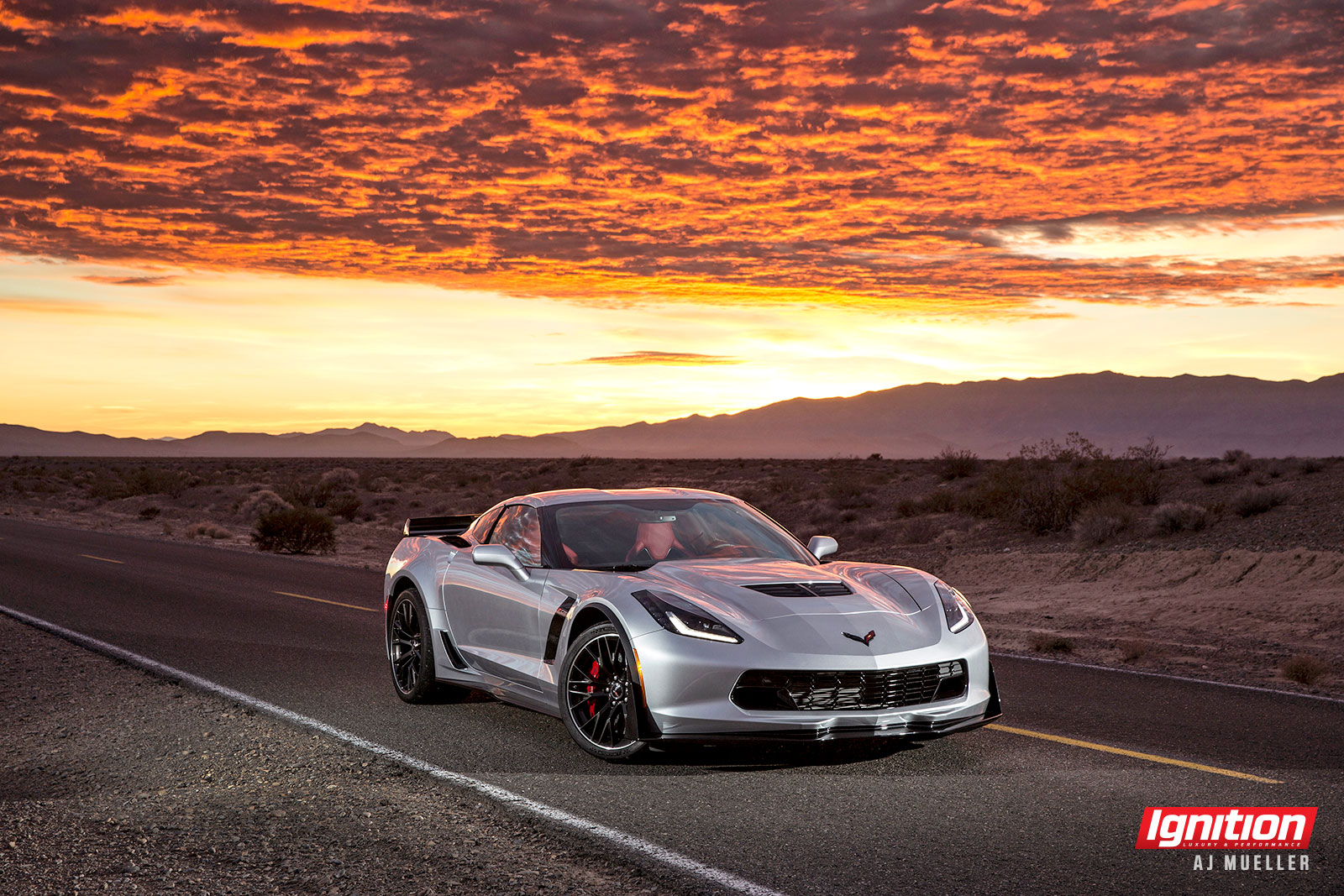
Spoiler Alert: Every time I think about the Corvette Z06, my mind wanders to the scene in Pulp Fiction where boxer-turned-fugitive Butch Coolidge (Bruce Willis) and lover Trudi (Bronagh Gallagher) flee town on a stolen motorcycle on the advice of mob boss Marsellus Wallace (Ving Rhames), who lost a lot of money on Butch after he threw his last fight.
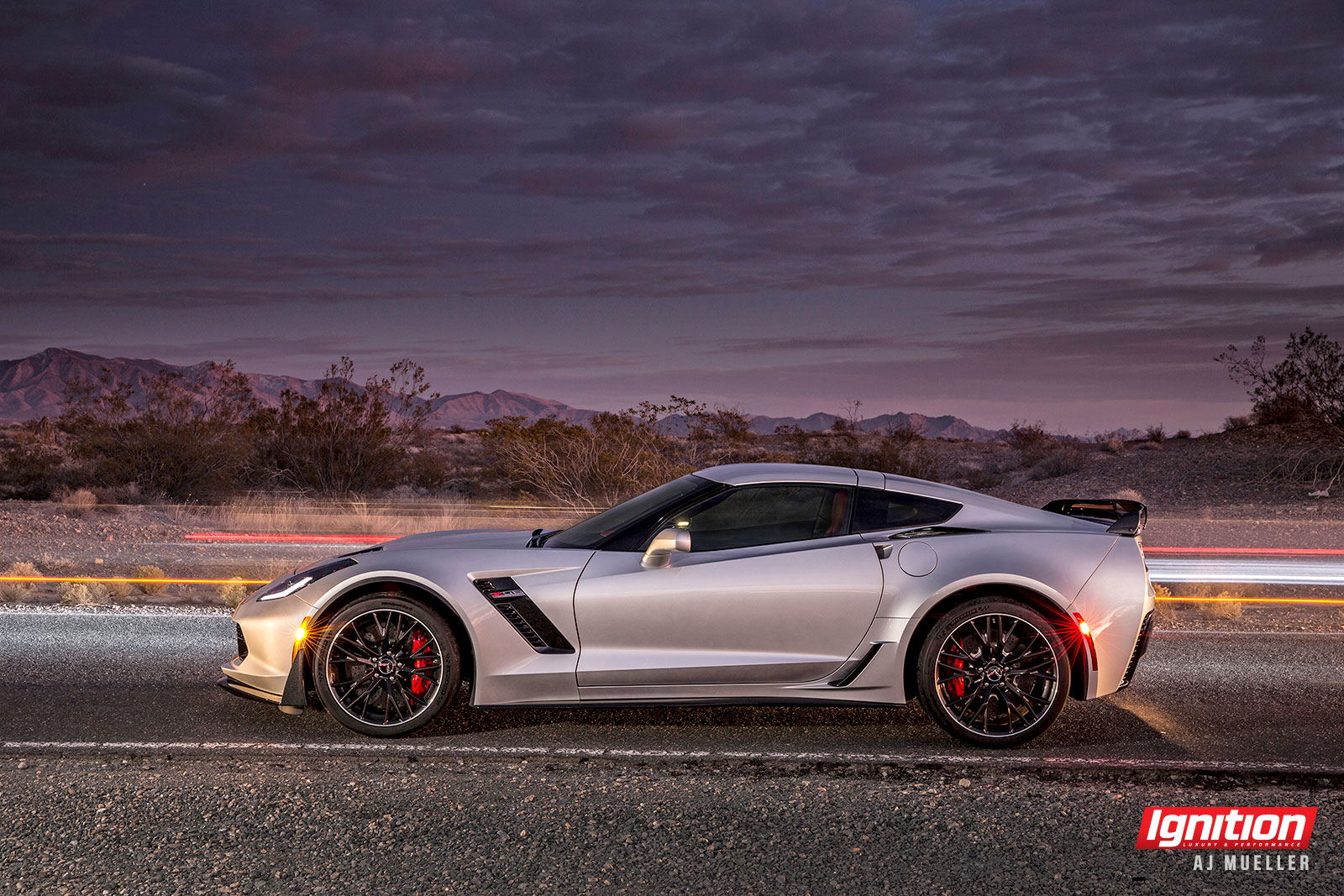
An hour away from all the lights and action of Las Vegas Boulevard, on the way to Death Valley National Park along highway 160, you’ll come across the Spring Mountain Motor Resort and Country Club nestled into the foothills of the Pahrump Valley. An automotive enthusiast's utopia if there ever was one, the motorsport ranch has been home of the Ron Fellows Performance Driving School since 2008.
Launching the 2015 Corvette Z06 flagship at the official high performance driving school of Corvette, on the school’s new 2.41-kilometre (1.5-mile) circuit was an easy decision for Chevrolet. The Mayor of Mosport’s team of excellent, experienced instructors regularly teach students how to drive the Corvette Stingray to their – and its – fullest potential. There is no place I’d rather be. And quite frankly, better places to be are few and far between.
 |
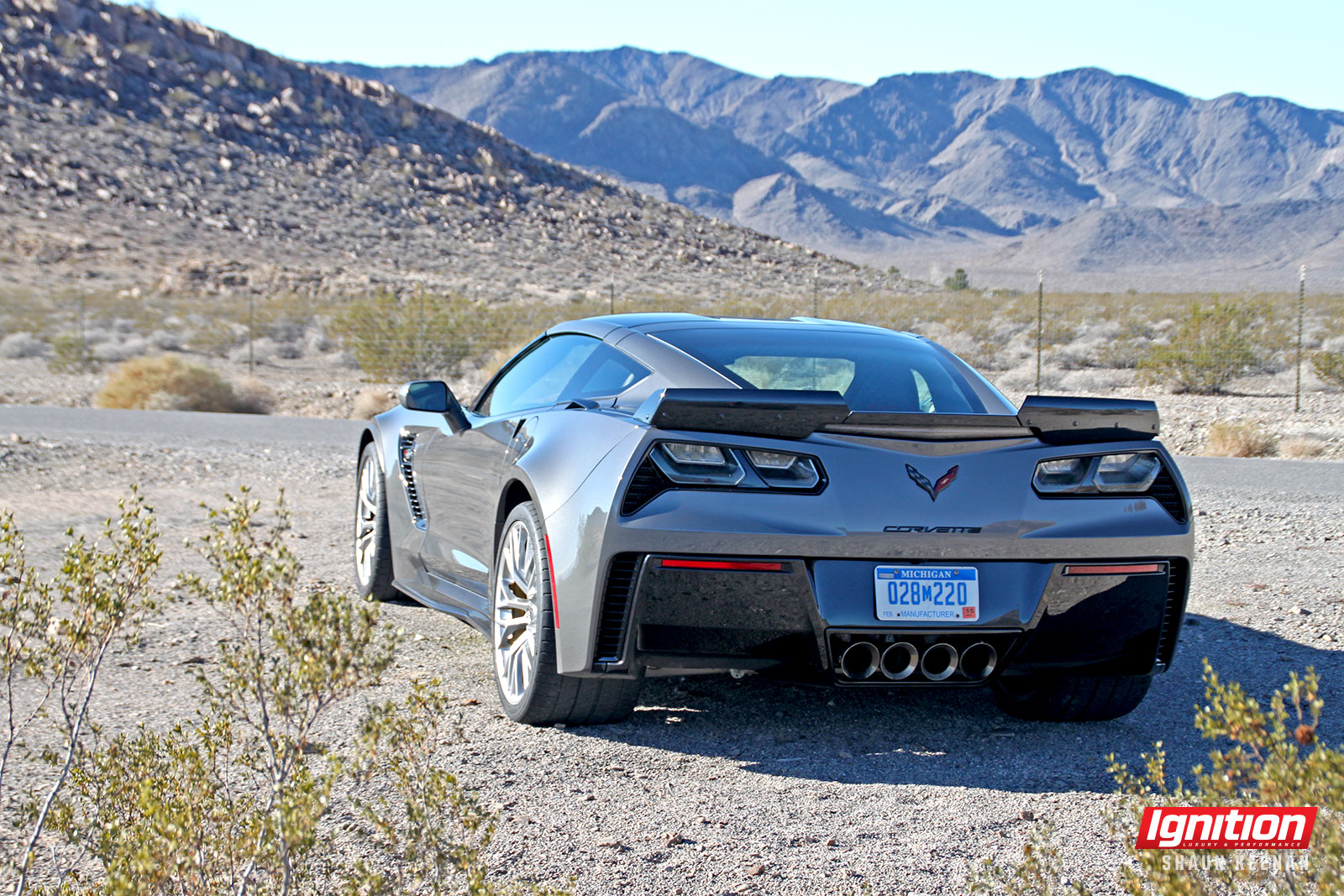 |
Built around the same lightweight aluminum frame structure and sharing much of its machismo with the current Corvette Racing C7.R GTLM race car (including chassis, aerodynamics and tire technologies), the Z06 offers supercar levels of performance for a fraction of the price of traditional supercars. A fully-loaded Z06 3LZ with the Z07 performance package and all the trimmings tops out at $121,000 in Canuck bucks. Consider the as-tested ticket of the 2015 Porsche 991 Turbo S I drove last October is $216,500, and the 2015 McLaren 650S Spider ran up to $383,000 (and could’ve easily gone higher).
Math isn’t my strongest suit, but it doesn’t take a rocket surgeon to see where this is going.
The new Z06 is the fastest production car GM has ever made – even faster than the 2014 C6 ZR1 – and it is right up there with some of the fastest cars I’ve driven, including the 650S and all-wheel-drive 911 Turbo S, both of which do 0-100 km/h in three seconds even. The Z06 accelerates from 0-97 km/h (60 mph) in 2.95 seconds, and it does the quarter-mile in 10.95 @ 204.4 km/h (127 mph) when equipped with an all-new 8L90 eight-speed paddle-shift automatic transmission with torque converter that launches the Z06 with 1.2 g forces.
The Z06 is also the fastest production car ever tested at GM’s 4.66-kilometre Milford Road Course, beating the Corvette ZR1 by a full second. At VIR, that difference grows to 4.3 seconds per lap, and a blistering lap time of 2:41.3 by the Z06. It all adds up to killer looks and killer performance.
 The LT4 supercharged 6.2-litre engine is a beefed-up and blown version of the LT1 V8 found in the Stingray. A dry sump oil system, forged pistons, titanium valves and rods, and the supercharger/intercooler assembly that is nefariously mounted in the valley between the cylinder heads helps deliver 37 and 40 percent more horsepower and torque, respectively.
The LT4 supercharged 6.2-litre engine is a beefed-up and blown version of the LT1 V8 found in the Stingray. A dry sump oil system, forged pistons, titanium valves and rods, and the supercharger/intercooler assembly that is nefariously mounted in the valley between the cylinder heads helps deliver 37 and 40 percent more horsepower and torque, respectively.
That power is accessed via a truly excellent seven-speed manual transmission – or the available automatic, which is arguably the best transmission GM has ever put into a production car. Developed entirely in-house, Chevrolet claims it shifts faster at wide-open throttle than the uber-quick seven-speed DCT PDK transmission that the Porsche 911 uses. On the track it sure feels close.
With the manual transmission, shifts are crisp, precise and happen as fast as you can make them, thanks to GM’s no-lift upshift algorithm (refer to page 53). The improved active rev-matching feature comes in handy in urban and traffic situations, too. Or, it can be turned off when you want to heel-and-toe downshift the old-school way on your favourite twisty and technical stretch of road, for example. It’s a wonderful piece of kit, but you do lose precious fractions of a second with every gear change compared to the automatic. That is a big deal for track day regulars and weekend racers.
The standard two-piece, slotted cast iron Brembos (371 mm and 365 mm, front and rear) with six-piston front and four-piston rear calipers are more than enough for day-to-day and light track use. However, the larger, carbon ceramic-matrix upgrade (394 mm front and 388 mm rear) is needed to decelerate the car from 97-0 km/h in 30.34 metres – the best braking performance of any production car GM has ever measured.
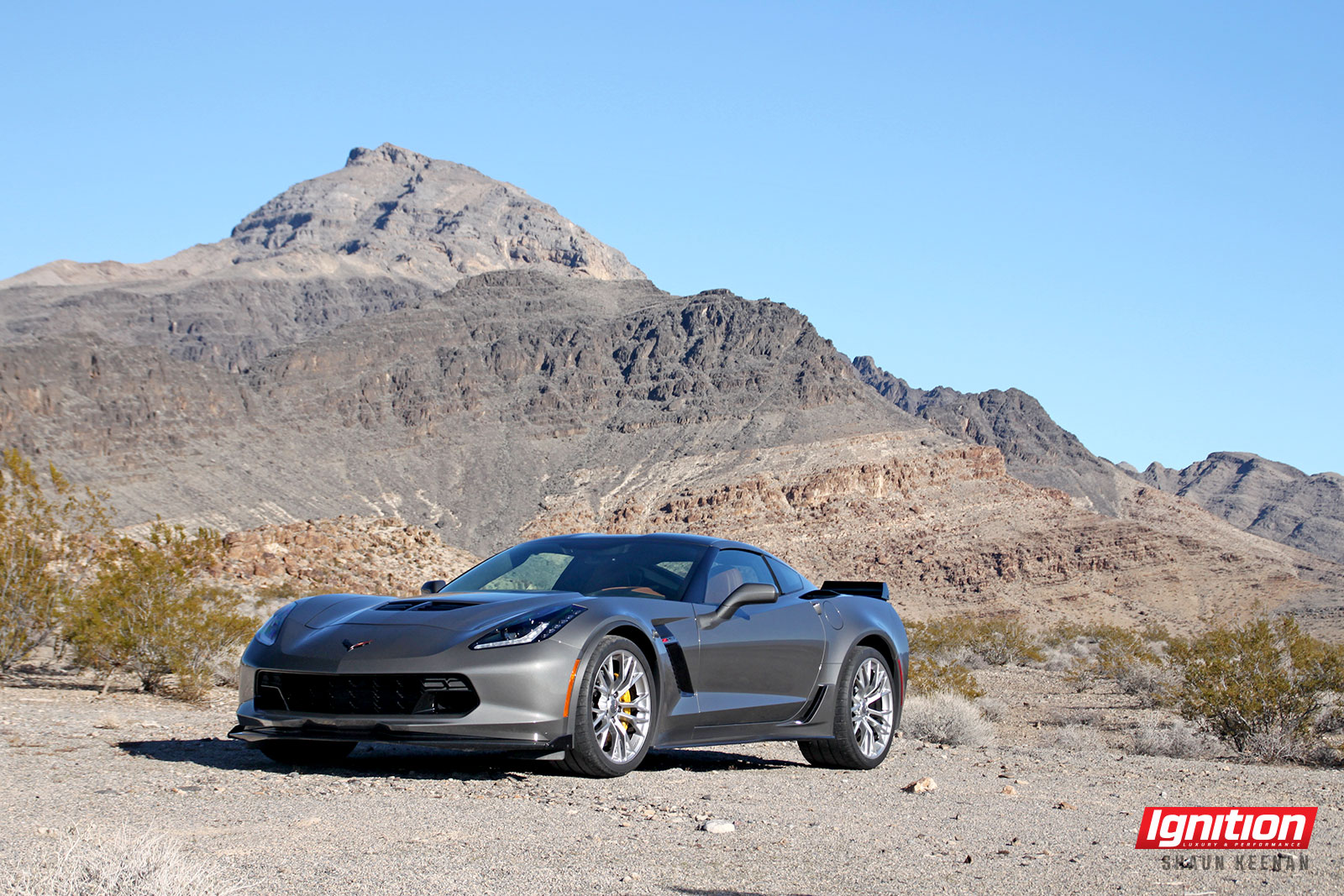 Functional upgrades to the C7’s shape give the Z06 a lower, more aggressive silhouette with more downforce. Longer, flared fenders accommodate larger, wider wheels and bespoke Michelin Pilot Super Sport or Sport Cup 2 rubber add more grip. Dedicated ducts cool the brakes, and larger vents/extractors provide better cooling for the engine, transmission and differential for heightened track capability. Carbon fibre body panels reduce weight and keep the centre of gravity low.
Functional upgrades to the C7’s shape give the Z06 a lower, more aggressive silhouette with more downforce. Longer, flared fenders accommodate larger, wider wheels and bespoke Michelin Pilot Super Sport or Sport Cup 2 rubber add more grip. Dedicated ducts cool the brakes, and larger vents/extractors provide better cooling for the engine, transmission and differential for heightened track capability. Carbon fibre body panels reduce weight and keep the centre of gravity low.
The standard Z06 aero package includes a front splitter and a short, three-piece rear spoiler. The stage two CFZ package adds a carbon fibre front splitter with small end plates, rocker splitters and a high three-piece spoiler. For stage three, the Z07 aero package adds larger front end plates and an adjustable see-through centre section for the spoiler to maximize rear downforce.
For advanced chassis control, the standard drive mode selector allows the driver to tailor a dozen different attributes of the car via preset Weather, Eco, Tour, Sport and Track modes. These attributes include the electronic limited-slip (eLSD), steering, throttle progression, transmission shift mode, active fuel management, exhaust mode, magnetic selective ride, launch control, traction control, stability control, performance traction and cluster display.
Furthermore, the performance traction management (PTM) settings that affect chassis response are accessible by pressing the traction control button twice in five seconds with the drive mode selector in “Track” mode.
Had I not lost my GM-supplied 8 GB memory card, I would have been able to analyze my own lapping experience in-depth thanks to Cosworth, Corvette Racing’s data acquisition and telemetry electronics partner. Fortunately, Ignition contributor Brian Makse was happy to share his so I could nerd-out on the wide variety of captured data you can access via the Cosworth Toolbox software. This is exactly the kind of feature Corvette customers have been asking for, along with a technologically-solid and higher-quality interior. The PDR can also be used to record your daily commute with or without overlays, and/or see how honest the valet parking people are.
Further to the infotainment and convenience technology side of things, OnStar with 4G LTE connectivity provides a built-in Wi-Fi hotspot to connect to the Internet. Chevrolet’s MyLink audio system with navigation, Bluetooth and more means this Corvette is the most-technologically advanced to date in addition to being the most potent.
Driving Impressions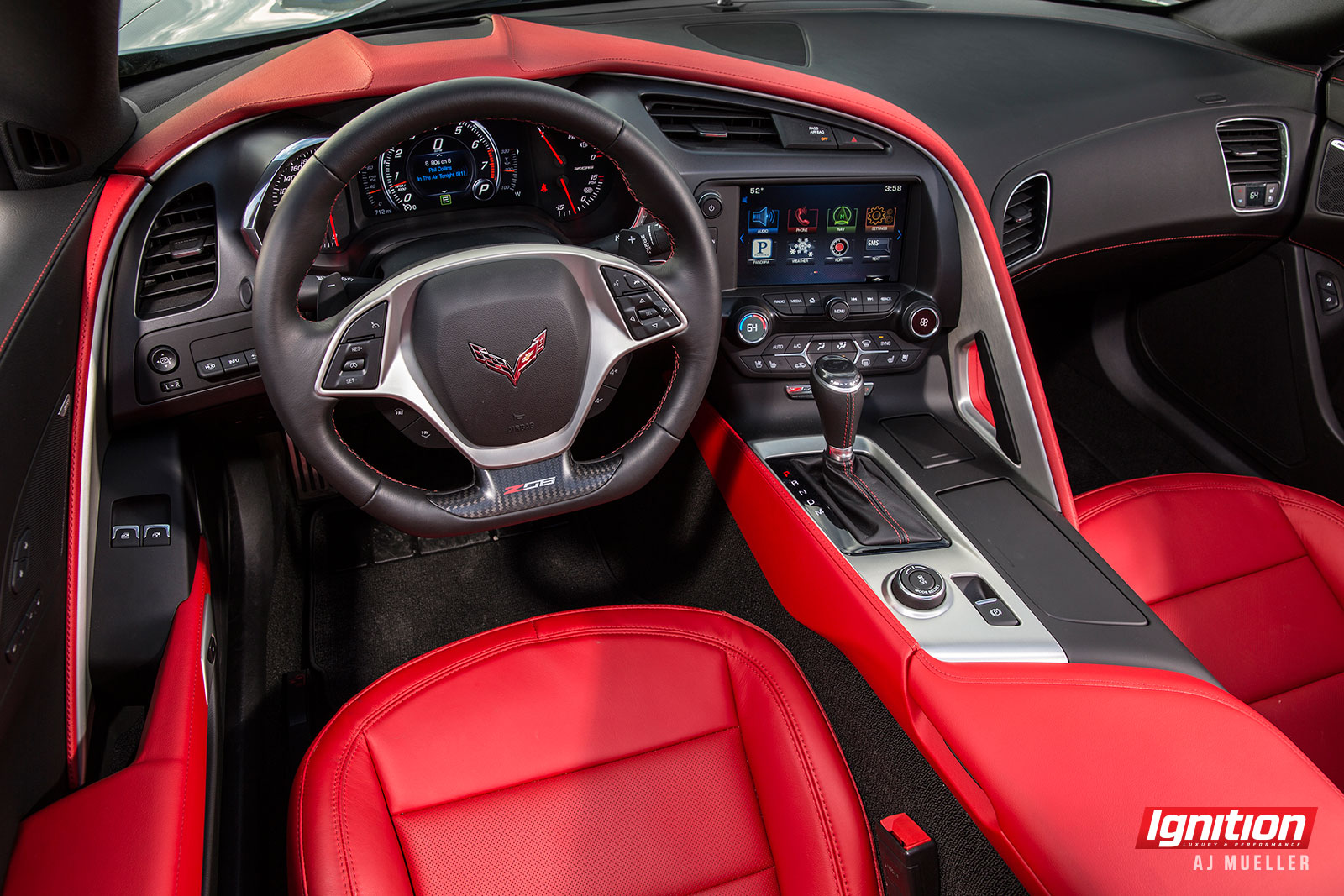 When you first get into the car, it’s basically the same as the Stingray. A flat-bottom Z06 steering wheel and signature badge on the centre console touting the car’s 650 horsepower and 650 lb-ft of torque are the only distinguishable differences. Even the form-fitting competition seats can be had in the standard ’Vette. But, upon firing up the feisty V8 and making the tires bark, it’s clear the Z06 is in a different league.
When you first get into the car, it’s basically the same as the Stingray. A flat-bottom Z06 steering wheel and signature badge on the centre console touting the car’s 650 horsepower and 650 lb-ft of torque are the only distinguishable differences. Even the form-fitting competition seats can be had in the standard ’Vette. But, upon firing up the feisty V8 and making the tires bark, it’s clear the Z06 is in a different league.
On the Spring Mountain track, the rotors felt true and showed minimal signs of abuse after multiple waves of drivers. The staggered 19- by 10-inch front and 20- by 12-inch wide track provides a huge contact patch for the Michelins to work their magic (Michelin is Corvette Racing’s technical tire partner), and the car’s near 50/50 front-to-rear weight distribution gives the 1,598-kilogram Z06 coupe a well-balanced ride on the road or on the track.
In general, the handling is very neutral with little to no body roll, but there is some mild understeer when you’re really on the razor’s edge at the track. It adds up to a whole lot of speed and, with more than 1,525 kilometres of development driving on the Nürburgring and well over 19,000 in Autobahn testing, reliability and durability, too.
I run every one of my two dozen or so laps in PTM Sport 1 mode – traction control is set to sport, stability control set to competition, magnetic ride (MR) dampers and steering are in track mode, the eLSD is also in PTM mode and launch control set to standard. My best lap is 1:11.5, driving the automatic. According to the built-in performance data recorder (PDR), which integrates 720 HD video, in-car audio, GPS data and allows recording and transferring of real-time vehicle data via a SD card slot in the glove box, that’s not too shabby. The instructors manage flat 1:08s in the warm desert afternoon, and even run a few tenths quicker first thing in the morning. As for Makse, he clocks a really quick 1:10.8 with very little seat time.
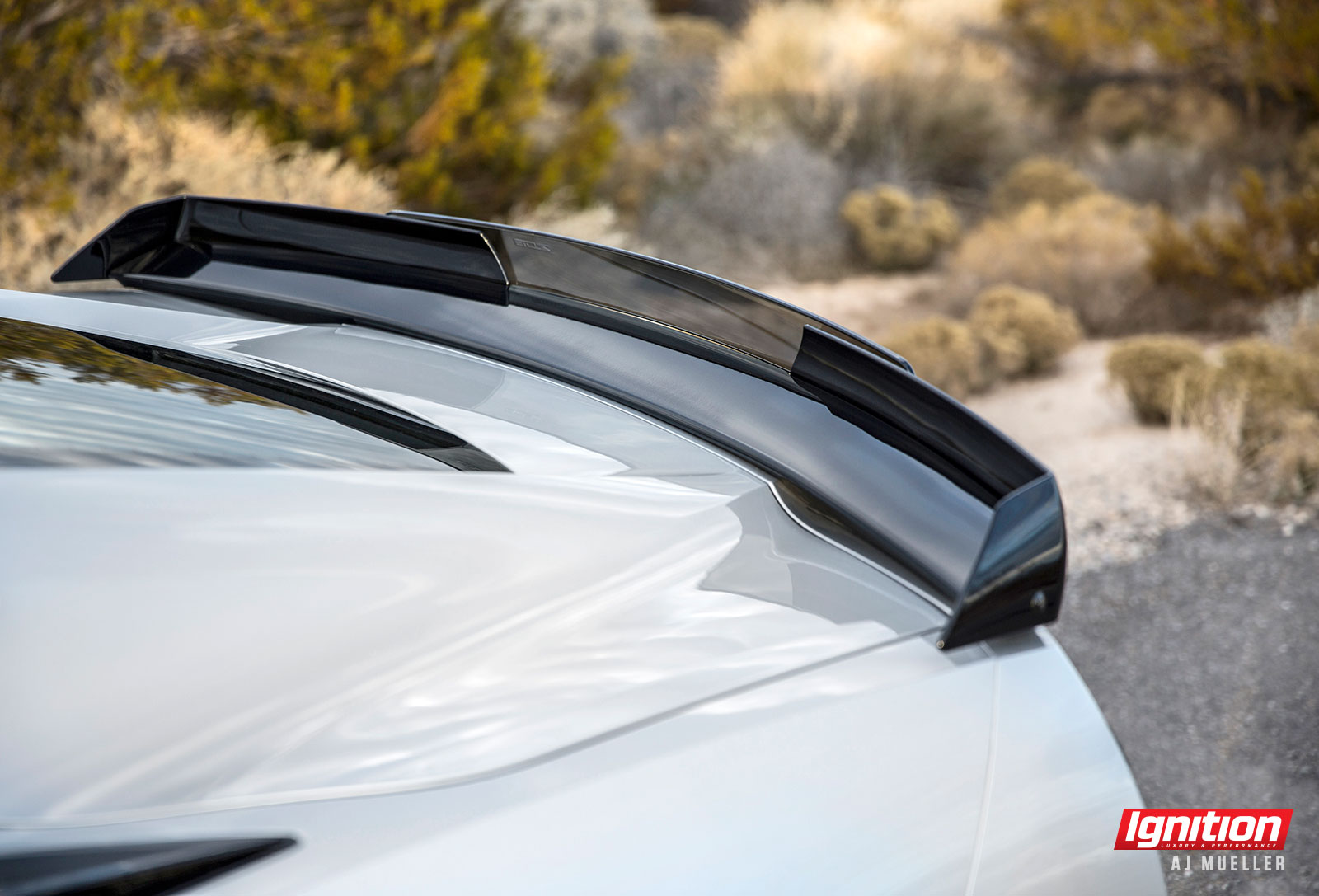 |
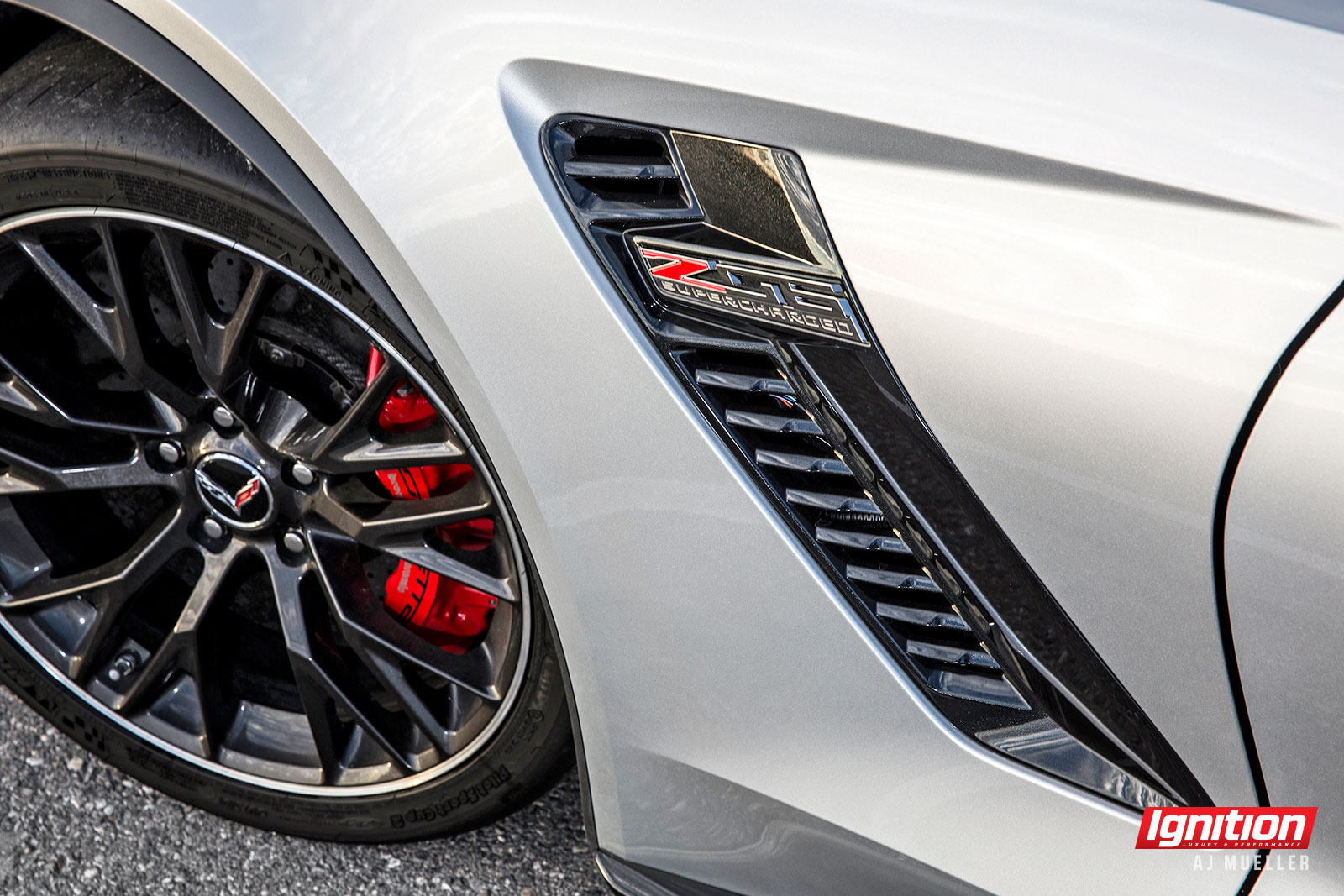 |
The Z06 drives really nicely at slower speeds away from the track, too. The regular exhaust note is sharp and yet very natural – it fits the car’s aggressive appearance at idle or at speed. On the road, you can hear and feel the difference between touring, sport and track modes as the tone of the exhaust gets angrier and the suspension firms up for maximum carving. It gets even better on the track where Z06 feedback actually inspires confidence rather than making you want to grip the steering wheel tighter.
The variable ratio electric-assisted steering wheel is tuned just right, and the MR dampers aren’t too jarring on the street, unlike the Turbo S or the McLaren. On the track, the competition seats hold me firmly and comfortably in place, and the seat cooling function is certainly a welcome feature when turning laps on a hot day. If the transmissions had been given names, they’d be Smackjaw and Razorshift. The former refers to the manual because it is gobsmackingly good, and the latter is the auto because it is so freaking fast.
Conclusion and the Future of Corvette

With a base price of $85,000, the new Z06 doesn’t bother sticking its nose up at other supercars. It doesn’t need to, as those supercars might as well be talking to the hand. The Z06’s racing counterpart just won and placed third in the GTLM class at the 2015 Rolex 24 at Daytona – a race that saw Jan Magnussen’s no. 3 Corvette Racing C7.R and Nick Tandy’s no. 911 Porsche 911 RSR fighting tooth and nail under the Florida moonlight before a friendly-fire incident in the factory Porsche camp took it and its no. 912 sister car out of contention.
Regardless of the outcomes on the racetrack, it has become abundantly clear that the world’s top automakers are fully engaged in horsepower wars in the production car arena all over again. Let’s hope the economy and oil/gas markets don’t tank now because, in this new era where high-performance has become the new fuel economy, the future of the automobile advances by leaps and bounds. If rumours of the next-gen C8 going to a mid-mounted engine, rear-wheel-drive configuration persist, one can only wonder (and dream about) what other wonders will be in store for the next super ’Vette. There has been significant collaboration with Pratt & Miller, and the development that led to the 2015 Corvette Daytona prototype points in that direction.
Until any rumours are put to rest, the new Z06 with the Z07 package will have to do. It more than does. You could even have a fleet of them for a relative bargain price. It also comes in a convertible. That’s Zed, baby! That’s Zed.
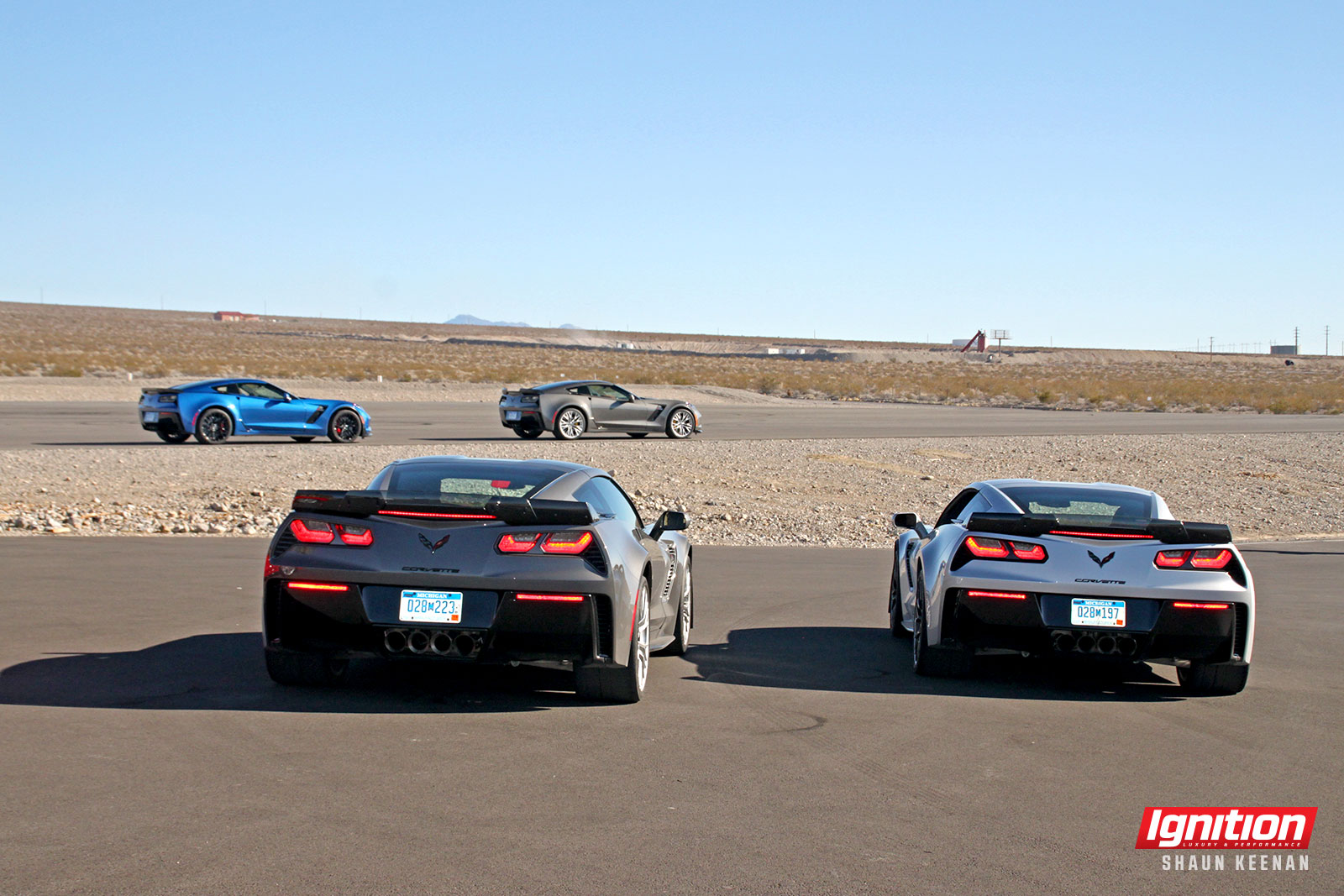
ESSENTIALS
2015 Chevrolet Corvette Z06
Base Price: $85,095
Engine: 6.2L supercharged V8 (LT4)
Horsepower: 650 hp @ 6,500 rpm
Torque: 650 lb-ft @ 3,600 rpm
Dry Weight: 1,598 kg
Configuration: FR
Transmission: 7-speed manual or 8-speed automatic
Tires: Michelin Pilot Super Sport run-flat (Z06); Michelin Pilot Sport Cup 2 (Z07) (P285/30 ZR19 front, P335/25ZR20 rear)
Fuel Economy Ratings L/100 km (city / hwy. / combined): 15.7 / 10.6 / 13.4 (manual); 17.7 / 10.2 / 14.3 (automatic)
Warranty (mos / km): 36 / unlimited
By the Numbers
$130.91/hp (base MSRP)
104.8 hp/L (engine displacement)
406.75 hp/ton (horsepower to weight)
14.3 L 100/km (auto – combined)
13.7 L 100/km (manual – combined)






















